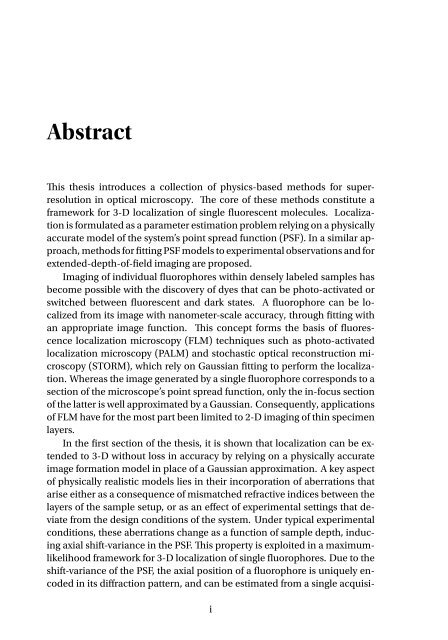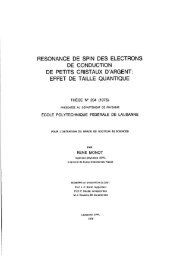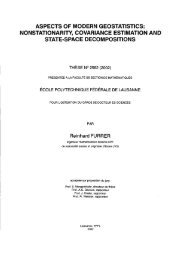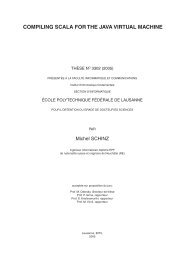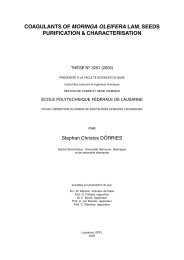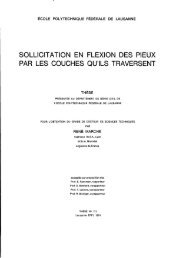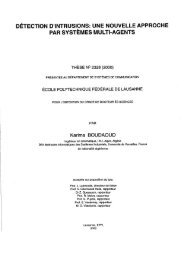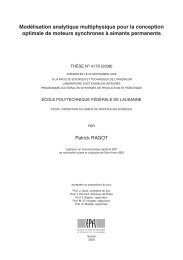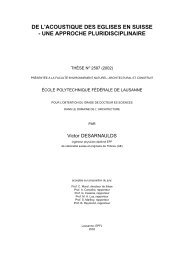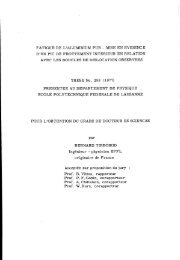Super-Resolution Fluorescence Microscopy Based on Physical ...
Super-Resolution Fluorescence Microscopy Based on Physical ...
Super-Resolution Fluorescence Microscopy Based on Physical ...
Create successful ePaper yourself
Turn your PDF publications into a flip-book with our unique Google optimized e-Paper software.
Abstract<br />
is thesis introduces a collecti<strong>on</strong> of physics-based methods for superresoluti<strong>on</strong><br />
in optical microscopy. e core of these methods c<strong>on</strong>stitute a<br />
framework for 3-D localizati<strong>on</strong> of single uorescent molecules. Localizati<strong>on</strong><br />
is formulated as a parameter estimati<strong>on</strong> problem relying <strong>on</strong> a physically<br />
accurate model of the system’s point spread functi<strong>on</strong> (PSF). In a similar approach,<br />
methods for tting PSF models to experimental observati<strong>on</strong>s and for<br />
extended-depth-of-eld imaging are proposed.<br />
Imaging of individual uorophores within densely labeled samples has<br />
become possible with the discovery of dyes that can be photo-activated or<br />
switched between uorescent and dark states. A uorophore can be localized<br />
from its image with nanometer-scale accuracy, through tting with<br />
an appropriate image functi<strong>on</strong>. is c<strong>on</strong>cept forms the basis of uorescence<br />
localizati<strong>on</strong> microscopy (FLM) techniques such as photo-activated<br />
localizati<strong>on</strong> microscopy (PALM) and stochastic optical rec<strong>on</strong>structi<strong>on</strong> microscopy<br />
(STORM), which rely <strong>on</strong> Gaussian tting to perform the localizati<strong>on</strong>.<br />
Whereas the image generated by a single uorophore corresp<strong>on</strong>ds to a<br />
secti<strong>on</strong> of the microscope’s point spread functi<strong>on</strong>, <strong>on</strong>ly the in-focus secti<strong>on</strong><br />
of the latter is well approximated by a Gaussian. C<strong>on</strong>sequently, applicati<strong>on</strong>s<br />
of FLM have for the most part been limited to 2-D imaging of thin specimen<br />
layers.<br />
In the rst secti<strong>on</strong> of the thesis, it is shown that localizati<strong>on</strong> can be extended<br />
to 3-D without loss in accuracy by relying <strong>on</strong> a physically accurate<br />
image formati<strong>on</strong> model in place of a Gaussian approximati<strong>on</strong>. A key aspect<br />
of physically realistic models lies in their incorporati<strong>on</strong> of aberrati<strong>on</strong>s that<br />
arise either as a c<strong>on</strong>sequence of mismatched refractive indices between the<br />
layers of the sample setup, or as an effect of experimental settings that deviate<br />
from the design c<strong>on</strong>diti<strong>on</strong>s of the system. Under typical experimental<br />
c<strong>on</strong>diti<strong>on</strong>s, these aberrati<strong>on</strong>s change as a functi<strong>on</strong> of sample depth, inducing<br />
axial shift-variance in the PSF. is property is exploited in a maximumlikelihood<br />
framework for 3-D localizati<strong>on</strong> of single uorophores. Due to the<br />
shift-variance of the PSF, the axial positi<strong>on</strong> of a uorophore is uniquely encoded<br />
in its diffracti<strong>on</strong> pattern, and can be estimated from a single acquisi-<br />
i


